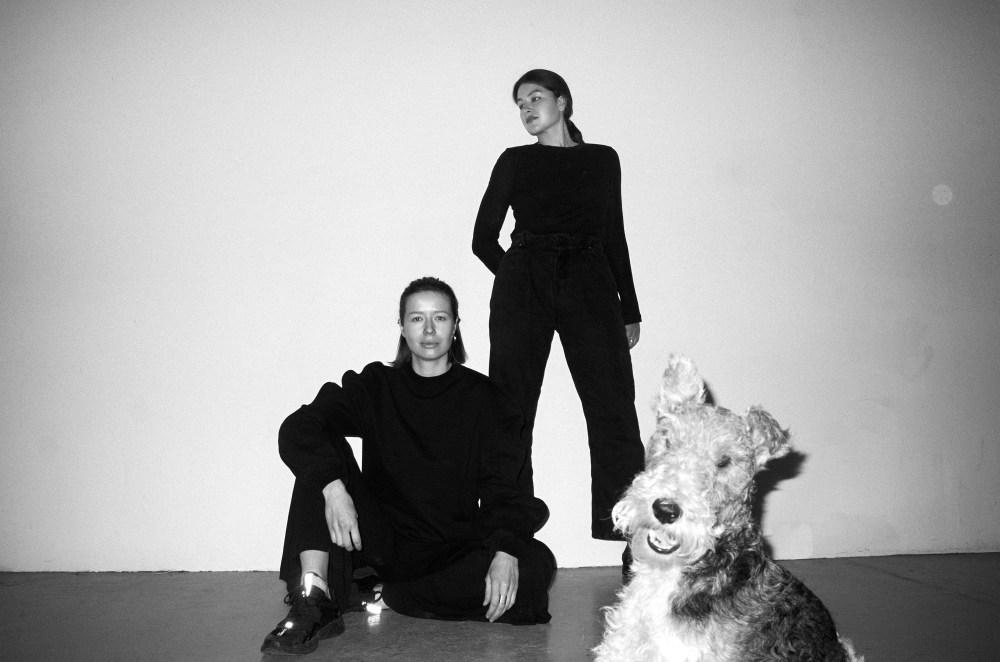Somewhere between the Anthropocene dog spa and the Instagram-friendly kibble bowl, something got lost. Dogs, living, breathing, dogs, have been slowly gentrified. Dogs have been humanized, perfumed, dressed up, diet-tracked, and reduced to little lifestyle mascots for their owners’ personal brands. Into this space walks mud™, unapologetically dirty-footed, tracking paw prints across the sterile floors of the modern pet care industry.
Founded by Karina Zhukovskaya (art director, brand strategist, and co-founder, co-chief creative officer of LOVE BURO) and Angelina Pischikova (designer at Uncommon Creative Studio), “Mud exists to honour the wild in every dog. Because real care isn’t about making them fit into our world, it’s about helping them thrive in theirs.”
Mud isn’t asking to be liked. It’s not interested in being “cute.” The brand’s central provocation — “For dirty dogs” — says more than it seems at first glance. It’s a rejection of the bourgeoisification of dog ownership, a challenge to the way we’ve commodified both pets and their care. Their manifesto reads less like a brand platform and more like an art school thesis: “Filth is freedom” serves not just as a glorious tagline but a declaration of the brand’s ethos. Mud is built on a simple but radical idea: caring for dogs means respecting their animal nature and is designed for humans who understand that respecting a dog means respecting their biology, not masking it. With no artificial scents, no human pH formulas in disguise, and no nonsense, these products honor a dog’s instincts instead of overriding them.
In an age of over-branded everything, Mud is offering a welcome void.
From a design standpoint, Mud is a quiet protest. The identity is stripped-down and spare, more Berghain than BarkBox. The visual language flirts with the antiseptic, but in doing so, makes space for its own contrast: this isn’t clean design for the sake of cleanliness; it’s restraint in service of the message. There’s something elegant about the refusal to indulge in dog-centric whimsy. No bones. No paw prints. No saccharine serif fonts or golden retrievers smiling in soft light. Just black, white, muddy browns, and a firm understanding that function — real, biologically appropriate function — can be its own form of aesthetic honesty.
That same restraint extends to the packaging, which could be mistaken for a line of high-end skincare if not for the bold, blunt copy. There’s a deliberate choice here to avoid scent, fluff, and over-designed touchpoints, and the typography feels like it’s been instructed not to try too hard. And that, in itself, is refreshing. In an age of over-branded everything, Mud is offering a welcome void.
It’s not perfect. The brand, in its deliberate minimalism and niche tone, runs the risk of sounding like it was made for a very specific audience: design-forward dog owners already fluent in wellness culture and allergic to excess. There’s a bit of a creative echo chamber happening here; beautiful and subversive, yes, but perhaps missing a layer of warmth or emotional accessibility that could broaden its reach without diluting its message. There’s also a lingering question of scale: how does a brand this rooted in rebellion grow without becoming the very thing it’s resisting?
The visual language flirts with the antiseptic, but in doing so, makes space for its own contrast: this isn’t clean design for the sake of cleanliness; it’s restraint in service of the message.
Still, there’s something invigorating about a pet care company that seems more interested in starting a conversation than launching a product line. I for one adore the science, strategy, and sustainability behind the brand and how Mud invites us to reconsider not just how we care for dogs, but why we feel the need to civilize them in the first place. It suggests that real love for animals means accepting their mess, their instincts, their animalness, and not covering it up with lavender-scented shampoo.
In the end, Mud isn’t only selling dog wash. It’s selling a kind of worldview: one where to be clean is not the point, and to be wild is not a flaw. Whether that’s your kind of dogma or not, there’s no denying it makes a statement. And that, in today’s bland sea of brand sameness, is worth getting a little dirty for.
Imagery courtesy of mud™
The post Filth Is Freedom: Mud Reclaims the Animal in Pet Care appeared first on PRINT Magazine.

